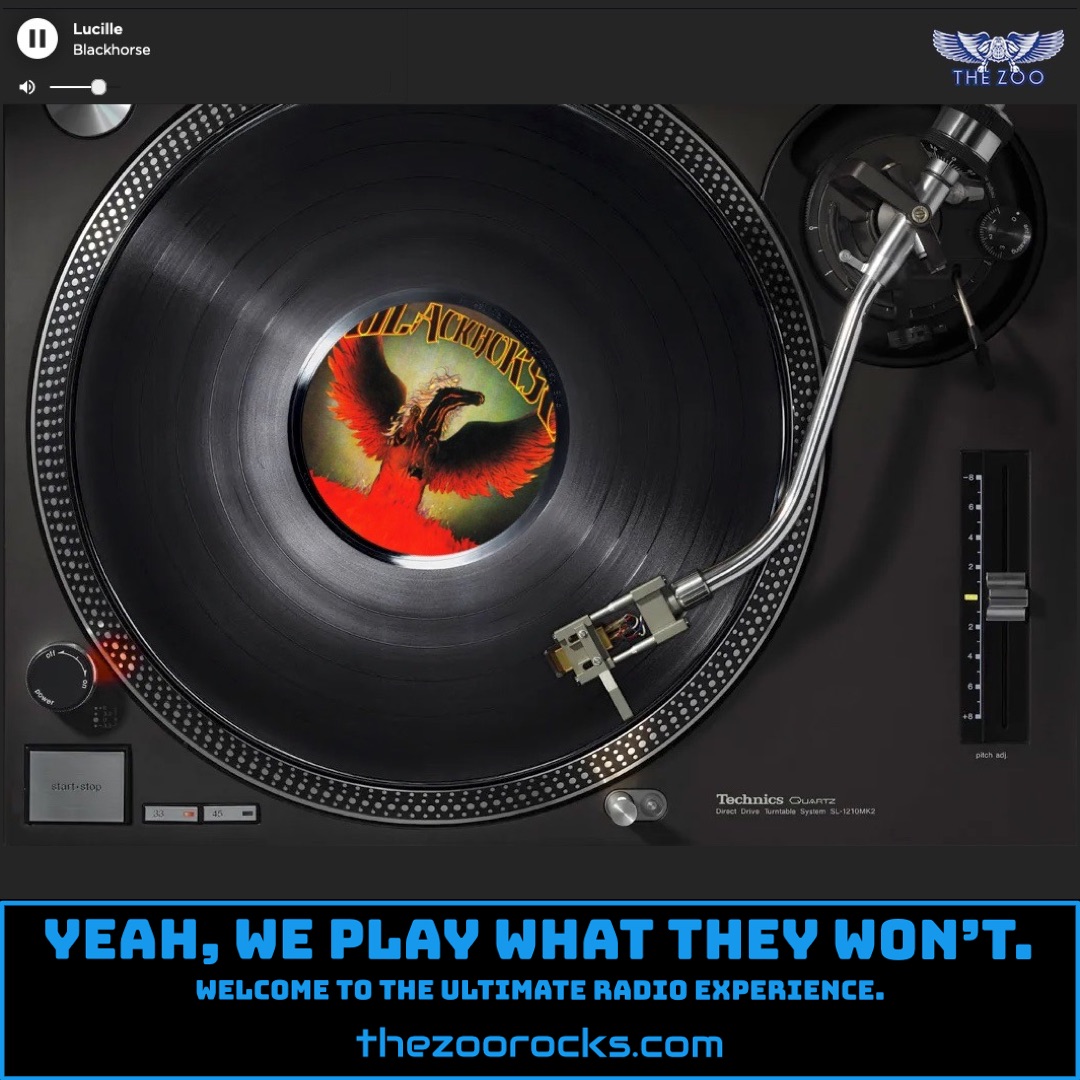Rocks on the Road
Jethro Tull
The Zoo Crew is spinning the gritty, blues-infused track Rocks on the Road by Jethro Tull from their 1991 album Catfish Rising, and the Zoo Freaks are surely vibing to its raw energy. This song stands out as a highlight from the album, often praised for its acoustic-driven build and vivid storytelling. According to a review on Rate Your Music, Rocks on the Road is considered the album’s pinnacle, described as an “acoustic-led builder” that echoes the evocative style of Mountain Men from Crest of a Knave. Its lyrics paint a nocturnal urban scene—a black cat on the quayside, ships’ lights, and a tense encounter with cops—capturing a restless, almost cinematic atmosphere. Ian Anderson, the band’s frontman, has a knack for weaving such imagery, and this track showcases his ability to blend bluesy grit with poetic flair.
While specific interviews about Rocks on the Road are scarce, Ian Anderson’s commentary on Catfish Rising provides context. In a 2008 Classic Artists documentary, Anderson noted that the album marked a return to mandolin and acoustic guitar, moving away from the synth-heavy sound of the 1980s. This shift gave Rocks on the Road its organic, rootsy feel, appealing to fans of Tull’s earlier folk-rock days. On The Jethro Tull Forum, fans have lauded the song’s live performances during the 1991-1992 Catfish Rising Tour, with setlists from shows in Miami and Glasgow highlighting its inclusion as a crowd favorite. Social media posts on platforms like Jethro Tull’s official Facebook often see fans reminiscing about the album’s bluesy edge, with some calling Rocks on the Road a hidden gem in Tull’s extensive catalog.
Jethro Tull began in Blackpool, Lancashire, in 1967, initially as a blues-rock outfit with jazz fusion leanings. Ian Anderson, the band’s charismatic leader, started as a harmonica player but soon picked up the flute, an unconventional choice that became his signature. Alongside guitarist Mick Abrahams, bassist Glenn Cornick, and drummer Clive Bunker, the band honed their sound in local clubs, drawing from influences like Muddy Waters and John Mayall. Their debut album, This Was (1968), leaned heavily on blues but hinted at the eclectic style that would define them. Abrahams’ departure led to Martin Barre’s arrival, a pivotal moment, as Barre’s guitar work alongside Anderson’s flute and vocals shaped Tull’s progressive rock era with albums like Aqualung (1971). Anderson’s vision—blending folk, classical, and hard rock—set Tull apart, earning them a cult following and commercial success, with over 60 million albums sold worldwide.
The band’s evolution wasn’t without quirks. Their 1989 Grammy win for Crest of a Knave in the Hard Rock/Metal category sparked controversy, as many didn’t see Tull as “metal.” Anderson quipped in an interview, “We do sometimes play our mandolins very loudly,” a nod to their eclectic style. Fans can dive deeper into Tull’s world through their official website, which offers tour dates, merch, and news. Their Facebook page is active with updates and fan interactions, while Instagram showcases tour photos and throwbacks. On X, Anderson often shares witty insights and tour announcements. For community vibes, The Jethro Tull Forum is a hub for fan discussions, and the Jethro Tull Fans Facebook group connects Zoo Freaks with fellow enthusiasts sharing memories and rare vinyl finds.

